The mysterious object. The image of Islam in Italy in between the two World Wars
by Enrico Galoppini
We propose here an essay by Enrico Galoppini The mysterious object. The image of Islam in Italy in between the two World Wars which was published for the first time in “Africana. Rivista di studi extraeuropei”, V, 1999, pp. 97-113.
Even from the distance of fourteen years the essay keeps intact its interest.
***
- Preliminary considerations
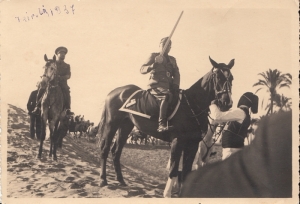 The reactions, sometimes hysterical and anyway rarely characterized by balance, that the events of the contemporary Arab-Islamic world arouse in the western public opinion [1], have inspired us to reflect on the reason of a barely concealed hostility that has always characterized the attitude of the majority of Europeans against a cultural universe with which our universe has woven hand in hand the fruitful intellectual relations, political and economic, which represented an element undoubtedly invigorating for the construction of European identity. The conflictual dimension of this contact, however, had often overshadowed everything else, and the friend-enemy schema because of which Islam and the Arabs eventually where the garments of the atavistic bogeys for the West [2], is that to which the majority reduce any possible relationship with the Arab-Islamic civilization.
The reactions, sometimes hysterical and anyway rarely characterized by balance, that the events of the contemporary Arab-Islamic world arouse in the western public opinion [1], have inspired us to reflect on the reason of a barely concealed hostility that has always characterized the attitude of the majority of Europeans against a cultural universe with which our universe has woven hand in hand the fruitful intellectual relations, political and economic, which represented an element undoubtedly invigorating for the construction of European identity. The conflictual dimension of this contact, however, had often overshadowed everything else, and the friend-enemy schema because of which Islam and the Arabs eventually where the garments of the atavistic bogeys for the West [2], is that to which the majority reduce any possible relationship with the Arab-Islamic civilization.
The religion of Islam [3] is its inner soul and what has given to it the essential constituent characters; that is why to understand the basic data of this tradition appears as an essential preliminary to a correct perception of a reality closer to us than it may seem at first sight, and here that the examination of what is written on the subject there can help in the hope of reaping the benefits of reflection we were talking about.
The works of specialists, the so-called “Orientalists” or “Arabists” if you prefer, are the most accessible source of information for anyone who wants to get an idea about the religion of Islam that goes beyond the usual three or four notions that circulate at the popular level, and this was the state of affairs in Italy which in its overseas possessions had a large number of “Muslim subjects.”
The era of the Italian conquest of the “Fourth Shore” in Libya, but even more that of the subsequent “pacification”, obtained at the price of a long and exhausting guerrilla war against the indomitable formations of the “rebels” headed by the legendary figure of the Sufi -warrior ‘Umar al-Mukhtar [4], coincided with the most fertile stage of the Italian Arabic Studies, the stage perhaps never equaled later, so that the texts of such scholars as Carlo Alfonso Nallino [5], Michelangelo Guidi [6], Leone Caetani [7] remain unsurpassed up to this day for various aspects. However, a careful examination of some of the works of those authors can detect some gray areas where it is really difficult to navigate with confidence, i.e. to get a clear idea of what Islam really is. It is not, for goodness sake, the matter of erudition, of poor preparation on the subject, but the incompatibility between a mindset and the object of knowledge that, in fact, is reduced to a simple gutted “object”, chopped, analyzed under the microscope of the most rigid scientific investigation, but fundamentally misunderstood. And the lack of understanding, of course, hardly generates respect.
Misunderstandings about Islam, as well as the stereotypes about Muslims – the latter being in part a filiation of the former [8] – evidently proceeded from a precise mentality, characteristic of a world infatuated with their choices (no one wondered if there was something to be learned from the Libyans) and impatient to a reality informed to different, if not antithetical, priorities and values. It was basically a vicious circle. A milieu totally drunk with its pretended conquests (especially those “moral”), churned out a knowledge able to fortify in their stances anyone interested of Islam, Muslim peoples, and more particularly to those who lived in our colony. Furthermore, the clichés about Islam and the disquisitions on the “Arab mind” are a reality of our days, and maybe one forgets that they were an important element in the practice of direct colonial rule [9].
Errors of assessment are not lacking even today, not to mention the selective interpretation of this religion, sometimes to grip the mentality of the average Western reader. This is in this way that Islam can be appreciated as “religion without clergy”, “reviver of the West through the Renaissance and the Greek culture”, “precursor of modern science” and so on; in short, to the extent that it is believed to tame it within the limits of a ‘politically correct’ assessment of the religious phenomenon. The best way to approach this religion, we believe, is instead not to want to bring it to our categories, avoiding preconceived ideas [10], and finally recognizing its own originality [11].
The literature on Islam and Libya was perfectly placed in a specific cultural environment, beginning to produce the amplifying effect of various rooted prejudices about Islam and Muslims. It was liberally gleaned from by the reporters, sent to the colony, who often ended to confirm what they had learned from their readings prior to arrival, or even to create new images and clichés.
Considering that the works of the specialists were the preliminary source of information for those who were dealing with colonial subjects, we therefore considered essential to focus, within the limits of our possibilities, on some of the major mistakes made in the assessment of what our colonial subjects held dear: religion [12].
We also believe that it is interesting to recall how what we are going to set forward was inscribed in the preparation of a climate suitable for the realization of the “civilizing mission” – the primary purpose of each colonialism and not a mere propaganda gimmick -, a massive undertaking able to involve a bevy of enthusiastic collaborators moved by “missionary spirit” [13]. The creation of this climate then passed through the pages of the writings analyzed, from which emerges the homogeneous standard of disseminated information about the Islamic religion and the sense which was underlying it.
- The different types of approach
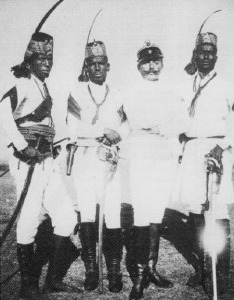 We can distinguish roughly three trends.
We can distinguish roughly three trends.
Some felt inclined to write about Islam as a sort of ideology towards which the fascist ideology could carry out a propagandistic act of rapprochement, in view of a fight against real or alleged common opponents (materialism, emissary-plutocratic powers), but also of a growing Italian influence in the Islamic world. It is the “Islamic politics” of fascism [14], which saw its strongest supporters especially in diplomatic circles, more in touch with local realities, and which strengthened itself from the tireless and obscure work of the individuals not illuminated by spotlights of officialdom. According to this view, however, Islam underwent an obvious deformation, as assimilated to one of the ideologies that Europe has produced in modern times, which, when they are placed on the same floor of a traditional doctrine, usurp a position that is not due to them [15].
Then there were the writings of “colonial topic” which, as noted, in what adhered to Islam, made constant references to the works of the Arabists of the profession. It is a material of varying quality which includes good insights as well as real ramblings by uninformed publicists solely driven by low polemical and disparaging spirit [16].
Finally, there is to consider the production of the scholars more or less affiliated to the exclusive orientalist circles, who handled Islamic issues sometimes skillfully, sometimes superficially. It should however be noted that there can be found in the language of the so-called specialists, at least of the most serious ones, a certain calmness that rarely was taking openly contemptuous tones.
But we must keep in mind that all of these ways of relating to the world of Islam (and presenting it) could be found united in a single writing, not composing necessarily separated lines of interpretation. It is indeed known that in its work of penetration in the Near East fascism had found the collaboration of academics, who had put at the disposal of the regime all their knowledge, albeit with various nuances. This is not surprising, and it was in line with the assumption righteously made by the large part of the researches of these subjects, according to whom the ignorance in Islamic matters would have been detrimental to the national interest [17].
We now turn the exposure of more macroscopic misunderstandings detected in the course of our investigation, flanked by a first attempt to critique conducted according to the tools currently available to us: the story of the Italian Arab Studies between the two World Wars will then appear as one of the pages that make up the book of Western misunderstandings towards Islam [18].
- The reductionist tendency
A frequent trend whenever the Islamic tradition was dealt with, was what might be called “reductionism”. Under the term “reductionism” we mean all those processes by which the superior is reduced to inferior, what is non-human to what is merely human; it is basically one of the forms in which the denial of the very idea of Revelation is explicated. this state of affairs is reached through the work with which, straying from relatively useful erudition, one tries to perform a work of interpretation which, suffering the use of inappropriate methods and preconceived ideas, most of the time does not result in what it should be, that is, understanding of true ideas.
There could therefore be heard really stunning claims of ‘Carlylian’ memory:
“Muhammad, the founder of Islam, is the one who, as always do the heroes of the great movements of the spirit, has bestowed on it its fundamental character” [19].
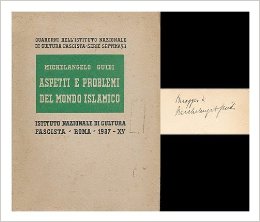 In this report exposed to the Third Congress of Colonial Studies (1937), Guidi, one of the more accredited at the time Islamists, ended up saying that the Qur’an,
In this report exposed to the Third Congress of Colonial Studies (1937), Guidi, one of the more accredited at the time Islamists, ended up saying that the Qur’an,
“Believed to be written directly by God, goes definitely back to Muhammad (the supercritique has not been able to find tools to deny this paternity)» [20].
A ‘paternity’ that already others had not minimally questioned, better yet:
“Mohammed […], in his 40th year of age, […] conceived the idea of being a herald of a new religious doctrine” [21].
Nallino, certainly more precise, distinguished the “teachings of the Qur’an” from “those that Muhammad had given verbally.” He recalled that the Qur’an, for Muslims, is the “exact word of God and not simply divine inspiration drawn from Mohammed“, but also stated that the holy book of Islam “contains a direct quotation of the Psalms of David (the only biblical text known personally by Muhammad)” [22], so much ‘bringing to naught’ the previous exposure [23].
In short, if the good faith of Muhammad [24] almost nobody was discussing anymore, it can be said that the second part of the shahâda, the Islamic profession of faith (“Muhammad is the Messenger of Allah”), few were willing to make concessions to.
In certain utterances there are revealed all the limitations of a way of relating with Islam, which are still present, although they are often camouflaged. It is ‘classical’, for example, the exaggeration of the role of His Prophet in the formation of the Islamic tradition:
“All the really essential attitudes of Islam definitely go back to Muhammad” [25];
in the same vein another statement:
“You can say in a sense that the Arab past, the period of ignorance [26], as it is called by Arabs […]was completely summarized by Muhammad, who gave it a great expression in Islam » [27].
Obvious consequence of such attitudes, along with an absurd comparison between Christ and Muhammad (always won in favor of the former), was the use of the word “Mohammedans”, still used at the time especially in non-specialized circles, as it was written in a small volume particularly attentive to the Libyan ‘version’ of Islam:
“From the very name of Muhammad Muslims are also called Mohammedans’ [28].
Thus it is obvious that despite a discourse often full of admiration and respect, Muhammad is assimilated to the founders of the many philosophies and doctrines of European policies, and lowered to the level of discussion denying a priori, in the name of objectivity [29] and an interpretation entirely illusory, non-human origin of the Qur’anic revelation. So, it is quite ”funny’’ to see how the Guidi felt compelled to defend Muhammad as the author of the Qur’an [30] against the attacks of those who came to even deeper levels of misunderstanding and consequent denigration [31].
To achieve the same result, one could still opt for a shortcut: it is the case of the Franciscan Father Costanzo Bergna, who had expressed himself in this way:
“The Islamism was originated by Muhammad, a native of Mecca, who, towards the 611 d. C., about 40 years old, began his apostolate, leaning against a supposed revelation of the archangel Gabriel ” [32].
The misinformation operated by clericals was fed by the reasons well-rooted in a centuries-old controversy, which provided the image of Islam as a “late counterfeit of Christianity” [33].
And that was not all. It has long been stressed beyond measure the certain features of the mission of the Prophet of Islam, if only because they are the easiest for anyone to deal with; that’s why his figure was often outlined with some features, as “social reformer” and “party leader”, while the merchant environment of Mecca would have undoubtedly forged him an indelible character making him a true “exalted practical man” [34].
Here then emerges a prophet-merchant hybrid:
“It was just his previous life that gave the Prophet’s an attitude of logic reflection, cold calculation. […]There was needed a possessed merchant, a man who, taking advantage of the rich practical experience of mercantile life, would raise it to the visionary existence of prophet, leader of a new world ” [35].
From this sort of Luther [36] what could arise if not “wonderful, simple, positivist edifice of Islam” [37]?
It seems already quite clear that the mockery of a tradition, unlike the case of the religious polemics of the past, if was made ‘go out the door’ with a generously used language, was entering through the ‘window’ reinforced by the meanings underlying considerations as these.
Let us also listen the explanation of “Islamic positivism”:
“The Islam, the youngest world religion was founded by a merchant and, moreover, by an Arab merchant. The innate coolness of the Arab race [38] put together with a practical sense of the merchant, with the ability to see the realistic possibilities and treasure them, here he created a religion that positive in its clarity, in the negation of any mystical, surpasses much all others” [39].
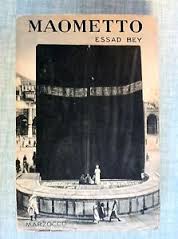 From the book of Essad Bey, perhaps more comfortable with the biographies of less demanding characters [40], one can understand everything, except what Islam is:
From the book of Essad Bey, perhaps more comfortable with the biographies of less demanding characters [40], one can understand everything, except what Islam is:
“The religion he preached to the people, was certainly an elevated positivism. All the supersensible, everything that could not be understood by reason, was arising in him [Muhammad] deep repugnance» [41].
Having left the refrain of Islam-positivism (“elevated” though!), the author recounted in an even more incomprehensible manner the story of the genesis of the Islamic State:
“The spirit was to the force, the word to the action. Faith had to erect a world, because nothing, from which the spirit originated, was surpassed” [42].
Finally, if one preferred to imagine Muhammad as a “dreamer with a kind face” it was enough to imagine “the fantastic mirage of the desert” mating “with the clear and dry air”; resulting in:
“The visions of imagination formed a sharp, bright, quiet image called Islam” [43].
After Islam-positivism and Islam-fantasy, we take the “supposed revelation of the archangel Gabriel” [44] to introduce another workhorse of a criticism sometimes destructive:
“[Muhammad] limited himself to give warnings, cautions, rules gleaned either from the Old and New Testament, derived from the apocryphal traditions and the gospels’ [45].
- Inferiority of Islam
The theory that the Islamic tradition would contract a huge debt to the Christian and Jewish traditions – nothing more than a blatant attempt to remove its originality (as already seen in part) – was shared by various specialists.
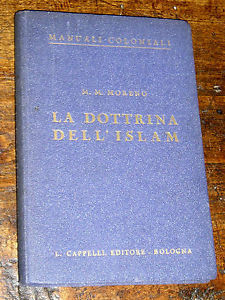 Absolutely inserted in this line of interpretation was Martino Mario Moreno [46], another well-known Islamist, who saw everywhere loans and passages from Christianity to Islam [47]. For the supporters of Christian parentage of Islam (who still are many), from Christianity it would receive all the positive sides (i.e. acceptable), while negative (unpleasant) would not have represented nothing but signs of a manifest inferiority, due in good part to defects in mentality.
Absolutely inserted in this line of interpretation was Martino Mario Moreno [46], another well-known Islamist, who saw everywhere loans and passages from Christianity to Islam [47]. For the supporters of Christian parentage of Islam (who still are many), from Christianity it would receive all the positive sides (i.e. acceptable), while negative (unpleasant) would not have represented nothing but signs of a manifest inferiority, due in good part to defects in mentality.
Moreno was convinced that the “elevation” of Muslim morality was due to the beneficial Christian influences in the Qur’an, in which the Ten Commandments would have interpreted in “the Christian” way, and in the Sunna (“not […] less obliged to Christianity than the Koran “), which would be “enriched in most parts of evangelical precepts” [48].
The revelator was the result of its exposure, which of course led to the examination of ‘contrasts with Christian morality” [49]. Here Moreno called Islamic morality unpretentious, practical, and quipped that Islam [50] “refuses you wine on earth, but will pour it for you in jugs in heaven” [51]. The irony on the alleged lust of Heaven as it is imagined by Muslims, was an old polemic argument, evidently still valid:
“For the future eternal life, the religion of Mohammed assured material luxury, delight, happiness” [52].
The Moreno came then to talk about
“Moral inferiority of Islam […] compared to Christianity, [because Muhammad] was not a saint in the Christian sense, but a head of state […] of an earthly city launched on the streets of imperialism” [53].
Also he was denouncing “the failure to distinguish between heaven and earth” that would bring “the tyranny of law that regulates even the breath” [54]. Then he added that Islam is
“A religion which weakness lies in what it precisely boasts of: in wanting to simultaneously provide for the welfare of this life and the other” [55].
In a nutshell, using as a criterion for measuring the precise options endorsed by modern Western civilization, it had purported to explain flaws and weaknesses of each type. The scholar believed to highlight (rather to blame) Islam, its “legalism, formalism, intrusiveness”, according to him being not exclusive to this religion, which provided the pretext for barbs against other religions [56].
But as for the Christian world, it was praised for the acute skills of scientific inquiry:
“Currently Christianity polemicizes with Islamism not through falsification, but denouncing the weaknesses, such as morality, fatalism, fanaticism, formalism, aversion to secular culture” [57].
So, faced with this despairing framework, Moreno celebrated the praises of Sufism [58], as life-giving and perfecting Islamic morality; but, needless to say,
“The new faith, despite the pride of the reached emancipation, cannot choke in itself a natural sense of filial reverence for that which immediately preceded it, [so] this psychological state opens the way for the penetration of new Christian ideas” .
In this way we arrive at the place where the influences Christians would be “the most obvious, indeed even confessed”: “asceticism and mysticism” [59]. Sufism, even in its later developments, would therefore be “a total rethinking, marked with the seal of originality, of Christian ideas” [60], and its sources, also according to the Malvezzi, would be “especially Christian” and “Indian” [61]. The list of the sources, that Sufism would draw on, could continue indefinitely. For De Renzi it would be formed “out of the content of Christian and Buddhist religions and Neoplatonic doctrines” [62].
Therefore, the entire Arab-Islamic world would be built and would have thrived thanks to an ability to reshape existing elements [63]. It was at least a misleading interpretation, and it is noteworthy to mention that in 1934 Moreno had dealt with the Italian colony of Islam claiming to provide “various notions useful to our colonial officials” [64].
The set of Islamic doctrines was then as defined very simple, so much so that the great success of the expansion of the seventh century would be due, according to Guidi, just to their simplicity; that is, they were “easy to establish themselves in primitive mentality” [65].
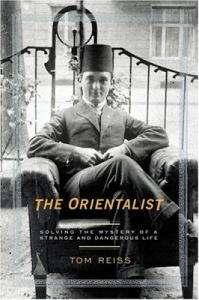 The rapid spread of the new faith in Medina, had depended on the hastening of “many members because of its simplicity”. A congenial “simplicity” to the
The rapid spread of the new faith in Medina, had depended on the hastening of “many members because of its simplicity”. A congenial “simplicity” to the
“limited needs of the spirit of the inhabitants of the desert and to the existing arrangements in them”.
According to the evolutionistic fixation, stuck everywhere, logically it continued like this:
“In fact, for quite some time the Arabs had been prepared to the concept of one God” [66].
There was no doubt. It had to do with principles of the low intellectual level, in comparison with those of religions “that remain essentially in the metaphysical field”:
“The standards issued by Mohammed were also simple, accessible even to the crudest minds” [67].
The Islamic God was not absolutely comparable to “a God of goodness, a Christ” but was defined as a bloodthirsty
‘Slaying and who for the voice of brotherhood and forgiveness replaces the scream of the jackal“.
A deity so tyrannical that beautiful oasis of Mizda, for example, could seem
“a prodigious gift escaped from the hands of Allah” [68].
Such a God could only impose a slavery to his worshipers: Malvezzi believed well to endorse the thesis of Renan, according to which Islam, “arid and unadorned faith”, would be “the heaviest chain which humanity has been ever loaded with“, an extreme legalism, expression of the tyranny of “Allah”, only suitable
“to primitive man, for the troglodyte, the fetishist, the cannibal, [whose] religion informs all the manifestations of life”
The ‘scientificity’ of Malvezzi’s work is fully demonstrated in these ruminations:
“Man […] wants to be bound, feels an irresistible need to mold chains for himself, to create obligations, limitations, barriers, strains of all sorts; now Islam satisfies him in anything beyond the hope” [69].
The continuation of his speech ‘closed the circle’:
“Therefore the savage more willingly abandons the fetish that complicates his life with a thousand obligations and interferes with the thousand prohibitions, to serve Allah, who in his turn imposes other infinite obligations and tyrannize with various other prohibitions, not to follow Christ, who freed him to feed on what suits them best, to slaughter animals as he prefers, to dress as he likes, to plant and harvest as they wish” [70].
- Islam as an ideology
The Islamic doctrines were also subjected to the most daring parallels: from the endless similarities between fascism and Islam [71], to the points of interference with the modern communism [72]. ‘Kins’ of this second type were recorded by those who, for example, presented Islam as a “leveling and egalitarian” religion [73].
We have already seen how much carelessly Islam and positivism could become almost equivalent. Down this slope it was possible to find, through the “theocratic socialism”, the new invention, the Islam-democracy:
“In contrast to all the constitutions of the ancient East, the rule of God, the state of Islam was a democratic formation” [74].
And shortly after the author clarified well his ‘discovery’:
“Muhammad and Islam have the merit of having for the first time developed a world-wide democracy” [75],
while a variation on the theme was proposed by those who saw connections with the ideas of the Enlightenment, more precisely
“The high ideals of brotherhood, equality, justice, banned by Muhammad” [76].
Not surprising, therefore, the fact that someone would expose himself to the risk of getting serious blunders:
“The building of Islam rests on four tenets [that] are: faith in God, faith in the Prophet, belief in the equality of men and faith in the hereafter” [77].
Re-thinking very well then the fraternity and guillotines, Essad Bey, after titrated paragraph on the government in Medina Terror, found the right definition:
“The Islam has been able to find, at least in theory, a happy synthesis of dictatorship and democracy” [78].
- The “Islamic threat”
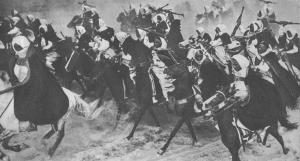 Another disputed issue was that of the universality of Islam; indeed, “even before a real universality”, Muhammad would have thought about “a religion for all Arabs”. Only later, would fall “after the barriers of the tribe” even those of the nation, and Islam approaching in this way to Christianity [79]. However, the concept of universality of the Islamic religion, “arose almost automatically, under the impulse of events, the last phase of the life of Muhammad and consecrated by later ages”, would not constitute what is called a good news for the West, since it
Another disputed issue was that of the universality of Islam; indeed, “even before a real universality”, Muhammad would have thought about “a religion for all Arabs”. Only later, would fall “after the barriers of the tribe” even those of the nation, and Islam approaching in this way to Christianity [79]. However, the concept of universality of the Islamic religion, “arose almost automatically, under the impulse of events, the last phase of the life of Muhammad and consecrated by later ages”, would not constitute what is called a good news for the West, since it
“also implies the material supremacy over all the followers of other religions, implies the domination of the entire world” [80].
This aggressive imperialism would be derived from the data base of the Islamic religion:
“Faith in one God, faith in his Prophet, carried with it the desire for dominion of the world. […] This simple man claimed the lordship of the world, the absolute lordship, without limitation, of all humanity” [81]; “The principal reason of Islamic expansion, rather than in spreading awareness of a civilization [was to] identify in religious fanaticism, [in the] essence genuinely fanatical and conquering of Islam” [82].
Hordes of fanatics there would certainly attack us from all sides, stirring the feared and misunderstood “holy war”, led by
“false prophets, who with burning words, in the name of religion and Muhammad drag the fanaticized masses” [83].
In short, a prerogative of the Christian religion (universality) was recognized to Islam, but in this case it was enough to alert the reader of a serious danger.
And thus it is not possible to say that one of the ultimate concerns of the specialists was to present the Islamic world even more divided than it is. The attempt to split a reality perceived as dangerous in the case of its unity of purpose (pan-Islamism), unfolded in different ways. It lingered thus identifying an Islam which has not only a lot of sects inside itself, but also of several Islam-s, marked by ethnic connotations and mutually incompatible. Francesco Beguinot, the most authoritative Italian scholar of Berber culture, echoing the thesis of Guidi on the close link between Islam and Arabism, peremptorily synthetized:
“The North African Islam is Berber Islam” [84].
The contrast between Berbers and Arabs was a constant element in the strategies of colonialism in North Africa, but in Libya on this line was not reached much. Within specialized studies there can was remarked every difference between Berbers and Arabs, leaning to the results of so-called “scientific missions”, which at the time revealed in themselves one of the possible practical applications [85].
The emphasis of some divisions within the Islamic world, such as in so-called “sects”, a term which is constantly abused [86], was therefore a recurring topic, as there were used to be pointed the huge existing differences between the alleged “Arabic dialects” [87].
It was up to Malvezzi therefore the task of warning about the “Islamic threat”, this time made even more alarming by the unity of language:
“If it’s so great the influence of the press […] it is easy to imagine the power they wield among primitive peoples, segregated from the world, the articles dictated by troublemakers from Cairo or Calcutta. […] The unity of the language […] is one of the major forces which Islam has” [88].
- Conclusion
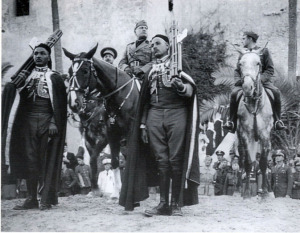 It was thus possible to observe how the comprehension of Islam in Italy in between the two World Wars was presenting large gaps and thus had to pass a long way; because of the serious impediment because of which academia often believed itself to be more informed than the Muslims themselves about their doctrines [89], the Western knowledge about Islam was turning the real Islam.
It was thus possible to observe how the comprehension of Islam in Italy in between the two World Wars was presenting large gaps and thus had to pass a long way; because of the serious impediment because of which academia often believed itself to be more informed than the Muslims themselves about their doctrines [89], the Western knowledge about Islam was turning the real Islam.
“The greatest mistake of these Orientalists, leaving aside the question of method, is to see everything in the Western perspective and through its own mentality, while the first condition to be able to interpret correctly any doctrine is, of course, to make an effort to assimilate it and ask yourself , to the extent possible, in the perspective of those who have concocted it ” [90].
In our days the interpretations and judgments sewn on Islam – which, we must remember, although not being a monolithic block, however, presented in all its special and temporal manifestations, a certain degree of consistency – depending on one’s inclinations and goals certainly not lacking, and it happens so that even the leaders of the ”Italian Islam” – excelling, and not little, the “experts” of the specialist studies, sometimes suffering from “dogmatic islamophilia” – are competing, often quarreling, in offering of this traditional form the images often antipodal to each other, if not incompatible with each other, with the result that the unsuspecting viewer of this unedifying spectacle does not know if Islam is an Eastern form of Puritanism, a branch of new age or a cauldron where in the end may be found everything, including the abused Western patchwork of human rights. The Muslim then – in defiance to every minimum sense of reality – in our culture is generally perceived as a being impervious to any change, so much he is a would-be forged by a religion presented as flawed by a fixation that, if anything else, characterizes the ideological paraphernalia of the materialistic world’s view, in all its disguises.
***
NOTES
1- See L. Guazzone Fabbricanti di terrore. Discriminazioni antiarabe sulla stampa italiana {Manufacturers terror. Anti-Arab discrimination in the Italian press}, Sapere 2000, Rome,1986; or the special issue of the weekly ” Avvenimenti”, January 23, 1991 (but also the issues from January to April of the same year), which gives a taste of the anti-Iraqi propaganda orchestrated by the media during the Gulf War.
2- See B. Scarcia Amoretti, L’Arabo come nemico {Arab as an enemy}, in the “Bozze”, July-August 1986 pp. 79-89. To get an idea of the relations of any kind occurred between these two cultural areas you can choose from an extensive bibliography: F. Cardini, Noi e l’Islam. Un incontro possibile? {We and Islam. A possible meeting?} , Laterza, Rome-Bari 1994; F. Cardini, Europa e Islam. Storia di un malinteso {Europe and Islam.History of a misunderstanding}, Laterza, Rome-Bari 2000; L’Occidente e l’Islam nell’Alto Medioevo {The West and Islam in the Middle Ages} (Weeks of Study of the Italian Centre for Studies of the Middle Ages – XIIª wk., 2 to 8 April 1964), Spoleto 1965 (2 vols.); E. Pace, Islam and the West , Ed. Lavoro, Rome 1995; M. Rodinson, Il fascino dell’Islam {The charm of Islam}, (It.trans.) Daedalus, Bari 1988.
3- For a first idea about Islam consult, as well – of course – the Qur’an: A. Bausani, Islam , Garzanti, Milan 1991; AA Mawdudi, Conoscere l’Islàm {To know Islam}, (It.trans.) Ed. Mediterranee, Rome 1977; S. NOJA, L’Islàm e il suo Corano{Islam and its Qur’an}, Mondadori, Milan 1995; G. Vercellin, Istituzioni del mondo islamico {Institutions of the Islamic world}, Einaudi, Turin 1996; useful information are obtained from the ff. websites: http://www.islam.it , by the Islamic Center of Milan and Lombardy; http://www.sufi.it/Islam ; http://www.arab.it
4- On the different stages of the Italian presence in Libya, first of all should be read the two volumes by A. Del Boca, Gli italiani in Libia, I. Tripoli bel suol d’amore. 1860-1922, II. Dal Fascismo a Gheddafi {The Italians in Libya , I. Tripoli – the beautiful land of love. 1860-1922 , II. From Fascism to Gaddafi}, Laterza, Rome-Bari 1986-1988. On the war in Libya, there are many studies including agile “dossier” by S. Bono, Guerra di Libia 1911-1912: il miraggio coloniale {War of Libya 1911-1912: the colonial mirage}, in «Storia e Dossier» {“History and Dossier”}, a. VI, n. 54, Sept. 1991, pp. 63-97; F. Malgeri, The Libyan war (1911-1912) , Ed. of “Storia e Letteratura” {History and Literature}, Rome 1970; S. Romano, La quarta sponda. La guerra di Libia 1911-1912 {The fourth Shore.The war in Libya 1911-1912}, Bompiani, Milan 1977. As for the last phase of the military operations: Aa. Vv., Omar al-Mukhtar e la riconquista fascista della Libia {Omar Mukhtar and the fascist reconquest of Libya}, Marzorati, Milan,1981; while focusing on the brutality of the Italian militaries is by E. Salerno, Genocidio in Libia. Le atrocità nascoste dell’avventura coloniale (1911-13) {Genocide in Libya. The hidden atrocities of the colonial affairs (1911-13)} Sugar, Milan 1979.
5- Carlo Alfonso Nallino (1872-1938) had favored in his studies theology, mysticism, philosophy and Islamic science. “In his need for a total knowledge of the Arab-Islamic civilization,” hi did not neglect other aspects, such as stands out from the monumental Raccolta di scritti editi ed inediti {The Collection of Published and Unpublished Writings}, published posthumously in six volumes between 1939 and 1948. He was also one of the founders of the IPO (Institute of the East) and the magazine «Oriente Moderno» {“The Modern East”}(1921). See F. Gabrieli, La storiografia arabo-islamica in Italia {The Arab-Islamic historiography in Italy}, Guida Editore, Naples 1975, pp. 75-77. See also E. Rossi, La vita e le opere di Carlo Alfonso Nallino {The life and works of Charles Alfonso Nallino}, in «Rivista delle Colonie» {“Journal of the Colonies”} a. XII, n. 8 August 1938, pp. 1101-1108, written on the occasion of his death. Dense and laudatory are also pages dedicated to him from ‘Abd er-Rahman Badawi in his Mawsû’at al-mustashriqîn (Encyclopedia of Orientalists) , Beirut 1984, pp. 408-414.
6- Michelangelo Guidi (1886-1946), in his dense but not numerous works faced questions of religious and cultural history, not forgetting the political history. He was particularly attentive to the figure of the Prophet of Islam and fought against the hypercritical excesses remaining however “within the absolute limits of the established reality which results from archeology, epigraphy and modern ethnography”. See F. Gabrieli, op. cit. , pp. 77-78.
7- Leone Caetani, Duke of Sermoneta (1869-1936), author of the monumental though unfinished Annali dell’Islàm {Annals of Islam }, came out in ten volumes between 1905 and 1926, was a true patriot of eclectic and generous spirit. He had financed several projects of Islamic studies among which the foundation (since 1924) that bears his name. He favored increasingly rationalist interpretation, if not hypercritical, of the religious phenomenon. See Nallino C.A., Leone Caetani, Islamist , in «Oriente Moderno» {“Modern East”}, a. XVI, n. 5, May 1936, pp. 48-52.
8- The large number of stereotypes that affect the Arabs are really just a less refined mode to attack Islam; from time to time Arab is depicted as fatalistic, fanatical, lazy, lustful, barbaric, backward, false, suspicious, etc., but it means that it is Islam that instills in its followers all these defects.
9- “The representation of European Muslims, Turks or Arabs was always a way to control the mysterious, menacing East“. E. Said, Orientalism, (It. trans.) Bollati Boringhieri, Turin 1991, p. 64.
10- These are some of the most common resolutions of which scholars knew (and sometimes know) to produce the proofs: reduction of the superior to the inferior, skepticism even radical, systematic mentality, intrusive historicism (hence the guesswork on loans from one religion to\or other ones on the evolution of religious forms).
11- Unless they meant by this reference to – shaking with an artificial bogey – the “irreducible otherness” of Islam compared to the foundations of European civilization.
12- The Rev. P. Costanzo Bergna, Vicar General of Tripolitania, observed that “for many people to flaunt practices of worship is a glory and there are still few who openly neglect them“. In L.V. Bertarelli, Guida d’Italia del T.C.I. – Libia {Guide of Italy by TCI – Libya}, Milan 1937, p.93. To understand the importance of the religious factor in Libya, just think that the Libyans escapees were accusing Italians to want them to convert to Christianity (see C. Marongiu Bonaiuti, Politica e religioni nel colonialismo italiano (1882-1941) {Politics and religions in the Italian colonialism (1882-1941)}, Giuffrè, Varese 1982, p. 285), and even today it interprets the attack on Libya – and all Colonialism – as the updated version of the eternal Christian “spirit of the Crusades”. See Eg. A.I. Diyab, Al-Ihtilâl al-îtâlî li-Lîbyâ (The Italian occupation of Libya) , in “Dirasât Ifrîqiyya” (African Studies), n. 6, Khartoum, Rajab 1410 H. / February 1990, pp. 63-88.The complaint was rather fanciful, but there was an element of truth. Many colonialisms of the nineteenth century had welcomed the conversion to Christianity as an indispensable means to the introduction of “civilization.” See G. Leclerc, Anthropology and Colonialism , (It. trans.) Jaca Book, Milan 1973, pp. 19 et seq. It was one of many theories (to put into practice), devised in the West, which provide for a phased evolution of humanity; hence the following statement: “The Muslim civilization is the necessary transition between the savagery of the Negroes, and the outward appearance of Western living, which Europeans spread around them“. A. Malvezzi, L’Italia e l’Islam in Libia {Italy and Islam in Libya}, Fratelli Treves, Milano 1913, p. 44.
13- On examination of this crucial aspect of ideology colonial and neo-colonial, including what today goes by the name of “globalization”, we have dedicated our graduation thesis in History titled Tra incomprensioni e pregiudizi. La Libia italiana 1931-1940 sul «Corriere della Sera» e l’«Illustrazione Italiana» {Between misunderstandings and prejudices. Italian Libya 1931-1940 in “Corriere della Sera” and the «Illustrazione Italiana»}, (Univ. of Pisa, AA 1996-97) especially pp. 98-183, entitled The mission of civilization. See also our Prejudice on the populations of Libya in the colonial era. A tool in the service of the “civilizing mission” , «La Porta d’Oriente», 2 August 2000 (http://www.enec.it ).
14- Here are some texts to learn more about an important aspect of foreign policy (and not only) of fascism: R. De Felice, Il Fascismo e l’Oriente. Arabi, Ebrei e Indiani nella politica di Mussolini {Fascism and the East. Arabs, Jews and Indians in the policy of Mussolini}, Il Mulino, Bologna 1988, pp.15-123; L. Goglia, Il Mufti e Mussolini: alcuni documenti italiani sui rapporti tra nazionalismo palestinese e fascismo negli anni trenta {The Mufti and Mussolini: some Italian documents on the relationship between Palestinian nationalism and fascism in the thirties }, in «Storia Contemporanea» {“Contemporary History”}, a. XVII, n. 6 December 1986 pp. 1201-1253; C. Mutti, Fascism and Islam , in “Storia del XX secolo” {“History of the twentieth century”}, April 1997 pp. 43-49; R. Quartararo, Roma tra Londra e Berlino. La politica estera fascista dal 1930 al 1940 {Rome between London and Berlin. The Fascist foreign policy from 1930 to 1940}, Bonacci, Rome 1980, pp. 205-270.
Let us also refer the reader to our recent study in which we have provided some lines of interpretation of the story of the relationship between Italy and the Arab-Islamic world during the Fascist period, dictated primarily by the needs of “Mediterranean” policy which also included a broadening fascist influence in the Near East. Among obstacles, hesitations, contradictory aspects and some success, the “Arab policy” of Mussolini proved at the same time sympathetic to the claims of the anti-colonial Arab-Muslim populations under the Franco-English plenipotentiary control, extremely cautious in taking a definite position against Paris and London (and sometimes even Berlin),a debtor – in practice of approach to Islam in Libya — of that “belief in progress” that in the concrete manifestations of religiosity of their subjects and Libyans in their forms of organization of existence informed of the Islamic ideal, identified survivals of a “barbaric” and “to be rejuvenated” world. See E. Galoppini, Il Fascismo e l’Islam {Fascism and Islam}, Ed. All’Insegna del Veltro, Parma 2001, with an introduction by Franco Cardini and an appendix of Claudio Mutti.
15- To understand whether this is a serious error, we must point out what distinguishes the metaphysical thought from the philosophical thought. Therefore see R. Guénon, Introduzione generale allo studio delle dottrine indù {General Introduction to the study of Hindu doctrines}, (It. trans.) Adelphi, Milan 1989, pp. 98-111. Also important are the reflections with which P. Sérant introduced his {Romanticismo fascista Fascist Romanticism} (It. trans.) Il Borghese, Milano 1971: “In this our ‘secularized’ world, political ideologies have often usurped a role once played by religious and metaphysical traditions. […] it would be futile to claim to establish a relationship between fascism and traditional doctrines […] . Modern ideologies should not be confused with the traditional doctrines, even when they take as a loan this or that element of the doctrines themselves, or they invoke the authority of it“(p. 14).
16- Here’s an example from a booklet addressed to young students: “Ramadan means “scorching sun”: it is the most characteristic fete of the Muslims, and falls in the ninth month of the Mohammedan year, thus the hottest “. Till here the misinformation, because, the Muslim calendar being based on lunar months, clearly the month dedicated to fasting falls each year at a different time of the calendar year (therefore there was no lack of speaking, in various writings, of the “defect of the Muslim calendar “). And here mockery wheels, being the consequence of ignorance: ” During these hours the faithful can not drink or eat, or smoke: they can not even wash their face, lest some water enters the mouth; you can work, but only when necessary to get food for the night“. Logical deduction for authors: “After all the Arabs always work so“. But not being satisfied they continued ‘describing’ what would happen after the breaking of the fast: “All those people who seemed ecstatic before the wonderful spectacle of nature, rushes to food, coffee, cigarettes, mead; and with astonishing voracity they devour such amount of food that we would not be able to eat in an entire week. Having calmed down “the furious hungry”, they drink and “fantasize”. F. Lattanzio, O. Besesti, Nostre terre d’Oltremare. Brevi cenni storici, geografici, politici ed economici per la gioventù studiosa {Our lands overseas. Brief historical, geographical, political and economic overview for young scholars}, Cappelli, Bologna 1936, pp. 42-43.
17- On the other hand this was one of the tasks of the Orientalists. See E. Said, op. cit. , passim. In M. Guidi, Aspetti e problemi del mondo islamico {Aspects and Problems of the Islamic World}, Settimo Sigillo, Rome 1990 (ed. orig. INCF, Rome 1937) there is claimed openly a leading role of the Arabists in the “Islamic politics” of the regime; this quote is then quite illustrative of the scholars-colonialism link: praising Dutch Muslim politics in Indonesia, which points were tracked by the famous Orientalist (and colonial official) Snouck Hurgronje, our Michelangelo Guidi emphasized the outcomes, ” the pan-Islamic idea […] loses any chance of effectiveness , ” op. cit. , pp. 62-63. That practical needs are inscribed in the ‘genetic code’ of Orientalism is also highlighted by the work of A. Baldinetti, Orientalism and Colonialism , IPO, Rome 1993, which focuses on the role that Italian Arabists played in Egypt in preparing the ground to the campaign of Libya, 1911. For the history of interwar Italian Orientalism see also G.E. Carretto, “Sapere” e “Potere”. L’Istituto per l’Oriente (1921-1943) {“Knowledge” and “Power”. The Institute for the East (1921-1943) }, in the “Annals of the Fac. of Sc. Polit. Univ. of Cagliari, ” vol. IX, Series 1, 1983, pp. 211-230 and M. Giro, L’Istituto per l’Oriente dalla fondazione alla seconda guerra mondiale, {The Institute for the East from the foundation to the Second World War }, in «Storia Contemporanea» {“Contemporary History”}, a. XVII, n. 6 December 1986 pp. 1139-1176, while as regards in particular C.A. Nallino read W. Strika, C. A. Nallino e l’impresa libica {C.A. Nallino and the Libyan campaign} , in «Quaderni di Studi Arabi» {Notebooks of Arabic Studies}, 2, 1984, pp. 9-20.
18- There happened, of course, the opposite. Interesting ideas in this regard are found in B. Lewis, The Muslim discovery of Europe , (It. trans.) Mondadori, Milan 1992.
19- M. Guidi, op. cit., p. 19.
20- M. Guidi, op. cit., p. 22.
21- E. De Renzi, Nozioni sull’Islam, con speciale riguardo alla Tripolitania {Knowledge about Islam, with Special Regard to Tripolitania} , Tipolitografia del Governo, Tripoli 1918, p. 2. The author also continued telling of “his ardent ideas [of Muhammad] “(p. 3). We can not agree with the great Turcologist, Ettore Rossi, who would later praise (despite not remembering well the title) the volume of De Renzi: “The knowledge of the people of Libya has benefited from the progress in the Italian studies in Islamic Studies and Muslim law, the publication of such excellent works as […] the Doctrine of Islam by E. De Renzi, 1918 Tripoli , E. Rossi, Il Contributo della scienza italiana alla conoscenza delle popolazioni della Libia {The contribution of science to the knowledge of the Italian population of Libya}, in Il Contributo della scienza italiana alla conoscenza delle popolazioni della Libia, in Atti del 3° Convegno di Studi Africani (Firenze 3-5 giugno 1948) {Proceedings of the 3rd Conference of African Studies (Florence, June 3 to 5, 1948)} , Florence 1948, pp. 45-62 (See quotation. P. 56).
22- C.A. Nallino, Islamism entry, Italian Encyclopedia, vol. XIX, Rome, 1933, pp. 606 and 608. It seems appropriate to consider the text stating that “the use of the word Islamism is the functional classification of Islam in the wide range of -isms that populate the western cultural landscape. ” W. Bint Ahmad Nachit, Osservazioni sul capitolo riguardante l’Islàm del libro di Storia “L’età antica e medievale” di C. Barberis {Observations on the chapter on Islam of Book of History “The ancient and medieval ages” by C. Barberis }, in «Il Messaggero dell’Islàm» , Muharram / Safar 1418, n. 125, June-July 1997 pp. 4-6.
23- The subject of the loans from the Jewish religion to Islam was a favorite topic, to which any Muslim can not but decisively oppose. See ‘Afif’ Abdul-Fattah Tabbara, Al-Yahûd fî-l-Qur’ân (The Jews in the Qur’an) , Beirut, 1984 (10th ed.), pp. 257 ff.: “Many writings have been published by researchers and orientalists about the sources of Islam: “Is it an offshoot of Judaism?”. The goal of this is clear: “Muhammad claims to be a Prophet and not the Messenger of God is not” “(p. 257).
24- Now it seems fair, in the wake of the most recent studies (eg. C. Lo Jacono, Muhammad, l’inviato di Dio {Muhammad, the Messenger of God }, Ed. Lavoro, Rome 1995; M. Lings, (It. trans.) Il Profeta Muhammad, Società Italiana Testi Islamici, Trieste 1988 {The Prophet Muhammad, Italian Society of Islamic Texts, Trieste 1988}, aside definitely the old-fashioned “Maometto”, adopted since the Middle Ages (think of the story of the Baphomet of the Templars) with the clear derogatory intent.
25- M. Guidi, op. cit., p. 21.
26- About this time, it was customary to investigate the hypothetical conditions of economic, political and social crisis, that would determine the descent of Revelation, thereby assuming a great deal of skepticism: “The causes that gave rise to the so-called inspiration of Muhammad were probably agricultural, if not commercial “. R. Sertoli Salis, Imperi e colonizzazioni {Empires and Colonization}, ISPI, Milano, 1942, p. 71.
27- M. Guidi, op. cit. , pp. 50-51. See. Then Bourbon del Monte di Santa Maria, L’Islamismo e la Confraternita dei Senussi {Islamism and Brotherhood of Senussi }, Tipografia dell’Unione Arti Grafiche, Città di Castello 1912, p. 127, note 1: “In order to disguise better to be the author of what was to become the law of the new political-religious organization, Mohammed pretended not to know how to read or write“(our italics). The author believed he had explained in this way the meaning of the epithet An-Nabî al-Ummî (‘The unlettered Prophet’), which instead ‘ expresses ‘virginity’ of the receptacle, whether universal or human; from the point of inspiration, nothing determines it, beyond the God; it is a blank sheet before the divine Calamus“: F. Schuon, Comprendere l’Islam {Understanding Islam}, (It. trans.) SE, Milano 1989 (2nd ed.), p. 110.
28- E. De Renzi, op. cit., p.1. Even in the light of this error, the various European colonialisms tried to accentuate the importance of the feast of Mawlid , the “Birth of the Prophet”.
29- E. Said spoke of a “strong impression of objectivity” of Orientalism, also in virtue “of a series of articulated linkages with neighboring areas of Western knowledge” (op. cit. , p. 26).
Then there would be lifted the question of the alleged greater objectivity in the case of non-existent ties of the scholar with the tradition under investigation. This view was widely embraced by the specialists, so that a Muslim would not have been eligible to write about Islam to Western audiences. And to this day the writings of Muslim authors are rarely translated. It is not clear how this could happen at a time when the voice of the specialist is listened to before any other, in every field. But if the mentioned opinion is allowed to be valid, one is even more perplexed to find that the ‘ irreligious license’ is not required if you intend to study the ideological foundations of the modern West. In other words, in this case, we doubt that generally it is deemed appropriate to grant a special space (as less involved) to the non-Westernized Muslim authors who wish to interpret democratic, liberal, socialist, etc. ideas and the values attached to them.
30- And he was not alone who had made this ‘oversight’. In fact, in the bibliography of the volume of the Capit. Bourbon Del Monte ( op. cit. ), p. 244 we find “Mohammed – The Koran, Paris 1909”.
31- For a clear explanation of the nature of the prophetic mission read A.A. Mawdudi, Conoscere l’Islam {To Know Islam}, op. cit. , pp. 37-72.
32- In L.V. Bertarelli, op. cit., p. 90.
33- Cit. in V. Ianari, Chiesa, coloni e Islam. Religione e politica nella Libia italiana {Church, settlers and Islam. Religion and politics in Italian Libya}, SEI, Torino 1996, p. 47. This was the opinion of Father Agostino Gemelli, that Islam was nothing but an “insurmountable bastion of religious fanaticism “. The controversy on religious subjects would marry perfectly with the nationalist propaganda and with the reasons of the “civilizing mission”.
34- M. Essad Bey, (It. trans.) Maometto, {Mohammed} Bemporad, Florence 1935, p. 61. The volume –recently reprinted by Giunti– was part of that genre of writings produced in the climate of the search for an understanding with the Islamic world. Apart from the usual combination of Mussolini and the Prophet, Essad Bey’s book ended with a eulogy of the work of modernizing Arab sovereign Ibn Sa’ud, new “leader” of the Arabic world.
35- Ibid, p. 48. What regards ‘Ali, son-in-law of Muhammad and the first Shiite imâm , the biographer of the Prophet went down hard instead with a cascade of rants. He would only excelled in the art of war; for the rest, he rather failed, “But Ali, he could do nothing else. If the Prophet declared his main passions to be love of women [insinuating the reason of Arab sexual mores], perfumes and prayer, Ali confessed just as sincerely to love more than anything else to sleep. […] Weak was his character and limited his ingenuity. He was lazy, had expressionless eyes, a large belly and long hands. So, at least, he was seen by his opponents. And this sleepyhead, this armchair [… and so on] “(p. 222).
36- “The work of Muhammad refers us really […] to that of Luther “(Ibid, p. 121).
37- Ibid , p. 56.
38- Hastly we can get familiar with some clichés, which created the other mystifying aspect used for purposes of domination.
39- M. Essad Bey, op. cit., p. 62.
40- Eg. that of Lenin.
41- M. Essad Bey, op. cit., p.79 (our italics). We must therefore think it was the Archangel Gabriel, to cause “deep revulsion in him“?
42- Ibid , p. 117.
43- Ibid , p. 95.
44- Rev. P.C. Bergna in L.V. Bertarelli, op. cit., p. 91. I wonder if Father Bergna would have subscribed to the idea of a “supposed Annunciation“. There are two things: either it was his mindset to lead to certain statements, or it was just bad faith.
45- Ibid.
46- Martino Mario Moreno (1892-1964) alongside the career of colonial official (e.g. from 1938 to 1950 he was Director General of Political Affairs of the Ministry of Italian Africa) to scholar of Arab-Islamic culture, Indo-Persian (particularly attentive to Sufism: see Antologia della mistica arabo-persiana {Anthology of Arab-Persian mystic}, Laterza, Roma-Bari 1951), East Africa and the Jews of our colonies (he had translated and annotated the Italian edition of M. Cohen, Gli Ebrei in Libia. Usi e costumi {The Jews in Libya. Customs and Costumes}, Sindacato Italiano Arti Grafiche, Roma 1930, reproposed by the Giuntina, Florence 1994). A figure of orientalist in the true sense of the word, who was committed to spreading the culture of Italy in the Arab world, even marrying it to the colonial policy of racial separation officially adopted in 1938 (See Politica di razza e politica coloniale indigena, {Policy breed indigenous and colonial policy}, in «Gli Annali dell’Africa Italiana», 2 June 1939). About M.M. Moreno see M. Nallino, Ricordo di Martino Mario Moreno (1892-1964) {Memoires about Martino Mario Moreno (1892-1964)}, in «Oriente Moderno», a. XLIV, n. 8-9, Aug.-Sept. 1964, p. 646-648 and F. Gabrieli, Orientalisti del Novecento {Orientalists of the twentieth century}, IPO, Roma 1993, pp. 117-120.
47- For this, in our opinion, Western scholars have long emphasized the role played by the journeys undertaken by the Prophet at a young age, accompanying trading caravans directed in places where Judaism and especially Christianity were flourishing.
48- M.M. Moreno, L’Islamismo {Islamism}, Istituto Editoriale Galileo, Milan, 1947, pp. 109-110. And again: “Islam owes to Christianity a great debt, which begins in the Koran” (p. 115). The booklet is a summary of the research done by the author in a previous age (i.e. colonial), during which he had published a couple of booklets on Islam, caring especially of our colonies. F. Gabrieli (Orientalists of the twentieth century, op. cit. , p. 118) speaks of “excellent informative booklets” and praises especially the one we have consulted. A. Bausani agrees, highlighting them as “the best of its kind that I know of in Italian language”. A. Bausani, Cinquant’anni di islamistica {Fifty years of Islamic Studies}, in Aa. Vv., Cinquant’anni di islamistica, in AA. VV., Gli studi sul Vicino Oriente in Italia dal 1921 al 1970. II. L’Oriente islamico, I.P.O., Roma 1971 {Studies on the Middle East in Italy from 1921 to 1970. II. The Islamic East , IPO, Rome 1971}, pp. 1-26 (See quotation. P. 13).
49- M.M. Moreno, op. cit., p.110.
50- He was referring in particular to that of fuqahâ’ (sing. faqîh ), a term which generally refers to any expert of sharî’a , regardless of his profession. It is also appropriate for the reciters of the Qur’an ( Qurrâ’ ) and those who teach it.
51- M.M. Moreno, op. cit., p.111.
52- E. De Renzi, Nozioni sull’Islam {Knowledge about Islam }… cit. , p. 4. “Despite that crudest and prejudiced Western criticism has often joked heavily on the “form” of the Islamic paradise, gratified by “material, sensual, crowded with women of pleasure and ephebic cup-bearers”. Nothing is more confusing and mystifying. Without going into the merits of the different interpretations that traditionalists and mystics have advanced about reality or the allegory of Koranic descriptions, here it is possible to quote the ‘ Hadith with which the imâm An-Nawawî concludes Riyad as-Salihin [Collection Ahadith of the VII century of Hegira / XIIIc.] : “The Messenger of Allah said:” When the people of Paradise will enter it, Allah Most High Benedict and Supreme will say, ‘Do you want something in surplus?’. ‘Have you not lit our faces?’ they will say, ‘Haven you perhaps not made us to enter Paradise and freed from the Fire?’, and he will remove the veil: and there will not be given a dearer thing than the view of their Lord”(Muslim). [ The Gardens of Devotees, 28 (2.17), S.I.T.I, Trieste 1990]“.” Il Corano {The Qur’an}, (Ed. and translation of H.R. Piccardo, revision and doctrinal control of the Union of Islamic Communities and Organisations in Italy), Newton & Compton, Rome 1996, note to p. 29. For a better understanding of the subject these lines seem to be useful: “If, for thousands of years, men have been satisfied with the moral symbolism of reward or punishment, it is not because they were fools […] but it still had the sense of balance and imbalance; […] They were in a sense experimentally, since they were contemplative, the certainty of God’s standards on the one hand and of human imperfections on the other; it was sufficient that a symbolism would remind them of what they already had a natural presentiment“. F. Schuon, Comprendere l’Islam {Understanding Islam}, op. cit., p.71.
53- M.M. Moreno, op. cit. , pp. 111-112.
54- Ibid , p. 112. One Muslim author illustrates well the perspective of Islam: “It is clear that “religion” is the organization of life and that life is lived according to a certain scheme and “religion.” Those who try to separate religion and life […] make a big mistake“. A. Tabatabai, Muhammad alla luce dell’Islam {Muhammad in the light of Islam}, (It.trans.) Arktos, Carmagnola (TO) in 1982, sip.
55- M.M. Moreno, Islamism , op. cit., p.111. It is not clear what, according to Moreno, were to “provide for the welfare of this life“.
56- Ibid, p. 113. However, according to the author, the Catholic moral theology would not have made the man prisoner in equal measure.
57- Ibid , p. 134 (our italics). An operation of this kind seems to us, on the contrary, falsifying.
58- In Arabic Sûfiyyah or Tasawwuf , i.e. the set of the contemplative ways (turuq) developed in the Islamic world from the data of Revelation. It is not, therefore, neither something superimposed on Islam, nor a doctrine only, but different methods, in their essence, that lead to the same goal. On Sufism, see: T. Burckhardt, Introduzione alle dottrine esoteriche dell’Islàm {Introduction to the esoteric doctrines of Islam}, (It.trans) Ed. Mediterranee, Roma 1987; R. Guénon, Scritti sull’esoterismo islamico e il Taoismo {Writings on Islamic Esoterism and Taoism}, (trad. it.) Adelphi, Milan 1993; M. Lings, Iniziazione al sufismo {Initiation to Sufism}, (It.trans.) Ed. Mediterranee, Roma 1997; C.A. Nallino, Raccolta di scritti editi e inediti. II: Islàm, Sufismo, Confraternite {Collection of published and unpublished writings. II: Islam, Sufism, Brotherhoods}, I.P.O., Roma 1940; S.H. Nasr, Sufism, (It.trans.) Rusconi, Milano 1994; I. Shah, The Sufis, (It.trans.) Ed. Mediterranee, Roma 1990.
59- M.M. Moreno, Islamism, op. cit. , pp. 115-116. The use of the term “mysticism” in the Islamic sphere generates a series of misunderstandings; it is the mania to bring everything to the Western viewpoints. Mysticism is then something distinct and incompatible with the initiation (at-Tasawwuf ). See R. Guénon, Considerazioni sulla via iniziatica {Considerations on the initiatory path}, (It.trans.) Il Basilisco, Genoa 1987, pp. 25-37.
60- M.M. Moreno, op. cit., p.121. Even in Sufism there would be found “the same mixture of spiritual and temporal that compromises the basic structure of the Muslim community“(p. 120). This is an example of how the modern Westerners it seems completely normal and just the separation between the spiritual and the temporal. The opposite is perceived as an attack on “freedom”.
61- A. Malvezzi, L’Italia e l’Islam in Libia {Italy and Islam in Libya}, op. cit., p.30. Aldobrandino Malvezzi de’ Medici, who was born in Bologna in 1881, was a lecturer in Colonial Politics and Legislation and, from 1913 to 1920, he held various positions at the Ministry of the Colonies, where he reached the rank of Chief Director of the division. He also worked in various magazines, such as “Il Corriere della Sera”, «La Nuova Antologia», «L’Illustrazione Italiana». Among his works there are: L’Italia e l’Islam in Libia (1911), Odierne questioni politiche del mondo musulmano (1920), I nuovi problemi della legislazione coloniale (1926), Elementi di diritto coloniale (1928), La politica indigena nelle colonie (1933), L’islamismo e la cultura europea (1956) {Italy and Islam in Libya (1911), Today’s Political Issues Of The Muslim World(1920), The New Problems Of Colonial Legislation (1926), Elements Of Colonial Law (1928), Indigenous Politics To The Colonies(1933), Islamism And European Culture (1956)}.
62- E. De Renzi, op. cit., p.70. Behind all this trouble in finding the matrices outside of Sufism, we believe to be the idea of an Islamic religion very concrete and simple, for those reducing it to sterile forms of worship. We add that some scholars, including Moreno himself, sympathized with the idea that Sufism was the “true Islam”, entangling the things even more. A work useful to understand the relationship between Sufism and Islam is M. Mutahhari, Gnosis and Sufism , (It.trans.) Atanòr, Roma 1992.
63- Its “undeniable spiritual values [Islam] found them existing at its birth and in its early centuries of life, [but would not] belong to its essence“. M.M. Moreno, op. cit., p.142. Malvezzi was even more succinct, saying that the purely Arabic in Islam there would be almost nothing. See A. Malvezzi, op. cit., p.15. The idea of the lack of originality of Islam was generally accepted: “The Arab culture [is] rather an assimilation with the necessary modifications of the Greek one rather than an original creation“. R. Sertoli Salis, Imperi e Colonizzazioni {Empires and colonizations}, op. cit., p.70.
64- M.M. Moreno, op. cit. , preface by the author. Moreno was referring to La dottrina dell’Islam {The doctrine of Islam}, Bologna 1935 (2nd ed. 1940).
65- M. Guidi, op. cit., p.57.
66- Rev. P.C. Bergna in L.V. Bertarelli, op. cit. , pp. 90-91.
67- E. De Renzi, op. cit. , pp. 3-4. We would like to know which religions “remain essentially in metaphysical area” and which have no connection with metaphysics.
68- G. Milanesi, The Sahara , in Aa. Vv., La rinascita della Tripolitania (memorie e studi sui quattro anni di governo del Conte Giuseppe Volpi di Misurata) {The rebirth of Tripolitania (memoirs and studies on the four-year rule of Count Giuseppe Volpi di Misurata)}, Mondadori, Milano 1926, pp. 20 and 24. As already mentioned, a language so openly offensive did not fall, as a rule, in the style of the specialists. It is also obvious the usage of “Allah” and not “God” by those who wished to mark the difference (if agreed) between us and them: “It should not therefore be written, as unfortunately often happens: “Muslims believe in Allah,” as if Muslims had their own particular god; it should be clarified that Muslims believe in God, or even better in the one and only Deity; as it is not certain ly written that “British believe in God”“. A.W. Pallavicini, Islâm interiore {Interior Islâm}, Mondadori, Milano 1991, pp. 28-29.
69- A. Malvezzi, op. cit. , See quotation taken from pp. 35-39.
70- Ibid., p. 39. The rules relating to food were especially perceived as meaningless. And even today the music is the same; in fact, between the two or three notions that all know about Muslims is that of the prohibition of wine and pork, which generally in our country not only disagreed on, but even ironically mocked, even by ‘unexpected’ people. On Islamic dietary laws: Centro Islamico, Il divieto alimentare per bevande alcoliche e carne di porco nell’Islàm {The feed ban on alcohol and pork in Islam}, Centro Islamico, Milano 1984; F. Ersilia, Introduzione alle regole alimentari islamiche {Introduction to Islamic dietary rules}, I.P.O., Roma 1995. A similar argument can be made to the clothes worn by Muslims: see Codice dell’abbigliamento islamico {Code of Islamic clothing}, Ed. del Calamo, Milan 2000.
71- See C. Mutti, preface to M. Guidi, op. cit. , who speaks of “pro-Islamism not instrumental and pragmatic, but which wanted to be ideological” since 1937 (p. 11). See E. Galoppini, {Il Fascismo e l’Islam Fascism and Islam}, op. cit., p.79.
72- See M. Guidi, op. cit., p. 69. To dispel many doubts about it, read M. Qutub, Misconceptions about Islam , (It. trans.) IIFSO, Salimiah – Kuwait 1409 AH – 1989 AD, pp. 357-376 in which it is stated categorically: “Islam and communism are diametrically opposed to each other“(p. 364).
73- Rev. P.C. Bergna in L.V. Bertarelli, op. cit., p.92. That is how it is conceived in Islam the “principle of equality”: “The Islamic teachings apply to all individuals“(A. Tabatabai, op. cit. , sip), while the measure of the value of individuals is established in the Qur’an (XLIX, 13) in these terms: “At Allah, the most noble of you is the one who is most pious“. The Qur’an, op. cit. This is because the Islamic doctrines (even those of Tasawwuf) are formulated in such a way that “everyone is capable of drawing benefits from them, each in the measure of his understanding“. A. Tabatabai, op. cit., sip.
About Muslim “leveling” let us also listen to the opinion of Frithjof Schuon: “For Islam, the determinations of nature are accidental; slavery is a fortuitous given and therefore has no relationship with caste system; the original humanity had neither caste nor races; and it is this that Islam wants to restore, adapting to the conditions of our millennium.” However, the absence of exterior castes in Islam “has no connection with a “humanitarian” concern in the usual sense of the term, for the simple reason that the point of view of the tradition is that the global interest [… ] of the human being “, and this absence “requires conditions that negate the possible drawbacks of this social undifferentiation; requires in particular a civilization that safeguards the religious freedom of everyone […] the freedom of life in God. Such a civilization is the very negation of egalitarian flattening, because it concerns what is the most elevated in us: men are compelled to dignity, they must treat each other as virtually saints. […] The social undifferentiation can only have a religious basis: it can only occur starting from top to down, reconnecting first man to God, then recognizing God in ‘man ‘. The dogma then, “acts as a transcendent knowledge accessible to all; knowledge as such is inaccessible to the majority, but it is essential to every man in the form of faith, so that the “believer” is almost a Brahmin, “virtual” or “symbolic” . ” F. Schuon, (It. trans.) Caste e razze {Caste and races} SE, Milano 1994. See quotation. pp. 31, 32, 37, 42.
74- M. Essad Bey, Mohammed , op. cit. , pp. 270 and 123. On the basis of the analogy between the individual and the community, a Shiite doctor explains: ” The case of the religious community is the same: it must realize what really is in its best interest and what is right according to its happiness even if this act may be against its wishes; it must not take the action desired by the majority of its members which is contrary to its real interest ” Tabatabai, op. cit. , sip.
75- M. Essad Bey, op. cit., p.124. The biographer of the Prophet added: “Behind Islam there was the free spirit “(p. 125), and, referring to the existence of different madhâhib (sing. madhhab ) –the schools of Islamic law through which Muslims can easily follow the routine sharî’a — in their lives, went on: “The primacy of free thought is pertinent to Islam more than to all other religions “(p. 320).
76- E. De Renzi, op. cit., p.69.
77- M. Essad Bey, op. cit., p.318 (our italics). These considerations may shed further light on the issue of equality in Islam, highlighting its aristocratic character: “To understand the traditional civilizations in general and Islam in particular, we must also take into account the fact that the human or psychological rule, for these civilizations, is not the average man immersed in the illusion, but the saint detached from the world and united with God; he alone is completely “normal” and he alone, therefore, has full “right to exist”, and hence derives a certain lack of sensitivity to the human as such“. F. Schuon, Comprendere l’Islam {Understanding Islam} , op. cit., p.29. It should be pointed out that the articles of faith of Islam are: the belief in a single god, belief in angels of God, belief in books sent from God, faith in the prophets of God, belief in the future life after death, belief in the fact that good and evil have at their cause the decree of God. See A.A. Mawdudi, op. cit. , pp. 73-107 and the pages of the website http://www.islam.it/islam/credi , by the Islamic Center of Milan and Lombardy.
78- M. Essad Bey, op. cit., p.322. The ch. The Terror is from p. 167 at p. 176.
79- M. Guidi, op. cit., p.21. Islam seemed to be acceptable only in what assimilated it (no matter if in imaginary way) to Christianity. However at p. 45 there is the recognition of an “irresistible tendency to transcend the particularism“. If anything, the problem lies in the content that is given to the term “universal”; the universality of Islam is not to be understood in the sense of political and social, there is no question to cosmopolitanism. “The universal is the informal, comprising at the same time, the unmanifested and the states of supra-individual manifestation“. R. Guénon, Pensieri sull’esoterismo {Thoughts on Esotericism}, The Dioscuri, Genova 1988, p. 281.
80- C.A. Nallino, entry Islam , op. cit. , pp. 603-604.
81- M. Essad Bey, Mohammed , op. cit., p.122.
82- R. Sertoli Salis, op. cit. , pp. 68 and 75.
83- Bourbon del Monte di Santa Maria, Islamism … cit. , p. 198. A.A. Mawdudi illustrates the concept of jihâd , literary “effort, effort on the way of God (al-Jihâd fî sabîli-Llâh )”, which is obligatory for all Muslims only in case of aggression by non-Muslims. In such cases, “the one who turns away from “jihad” is a sinner. You may well doubt his Islamic faith. […] All of his “‘Ibadat” [acts of worship] and all his prayers are but a deception, are but a vain pretense of devotion “( op. cit . , p. 120). On jihâd see also About the concept of “jihad” , Appendix 9 to the Koran (Ed. and translation of H.R. Piccardo, revision and doctrinal control by the Union of Islamic Communities and Organisations in Italy), op. cit. , pp. 582-583: “Allah says: “You were ordered to fight, even if you do not like it. Well, it is possible that you dislike a thing which is good for you, and it may be that you love a thing which is rather harmful. Allah knows and you know not “(II, 216)“. The war, therefore, should be declared whenever Muslims are involved in a state of fitna (persecution), which can be defined as follows: “All phenomena, behaviors and intentions related to persecution, sedition, subversion, scandal, vice, pollution, corruption, discord, disorder, disobedience, rebellion against Allah, His laws, His creatures“(ibid, p. 49, note 153). In the Qur’an (II, 193) it is written: “And fight them until there is no more persecution and religion should be (made only) to Allah. If they cease, let there be no hostility except against those who persevere“. Indeed, “it is not the destruction of the enemy that is the goal of the believers, but the cessation of fitna […], excluding following any kind of retaliation “(ibid, p. 49, note 154).
This is what regards the real and proper war, but the “effort” can and should be conducted with such means as the word, the writings and example. All efforts aimed at the pleasure of God is jihâd. Islamic tradition thus distinguished between al-jihâd al-akbar (the Great jihâd ) and al-jihâd al-asghar (the Small jihâd ), the first forming the individual struggle against the obstacles placed on the “way of God”, the second one against external opponents. See La grande e la piccola guerra santa {The great and the little holy war}, in “La Torre”, n. 10, June 15, 1930; A. Medrano, (It.trans.) Islam ed Europa {Islam and Europe}, Edizioni of Ar, Padova 1978, pp. 57-104.
84- F. Beguinot, L’Islam nell’Africa del Nord {Islam in North Africa}, in Aa. Vv.( CENTRO STUDI PER IL VICINO ORIENTE {Centre for the Near East Studies}), Aspetti e problemi attuali del mondo musulmano {Aspects and current problems of the Muslim world}, Roma, 1941, vol. I, pp. 125-152 (see quotation p. 127). The Center was founded by Michelangelo Guidi at the Royal Academy of Italy at the beginning of 1941 and the volume contains the texts of lectures on the Muslim world by M. Guidi, F. Gabrieli, L.V. Vaglieri, E. Cerulli, V. Vacca , F. Beguinot, M. Nallino, organized in the framework of the brief existence of the Centre, activated in the climate of intensification of “Islamic politicy” of fascism and the contribution to it by leading scholars in the field. See M. GIRO, L’Istituto per l’Oriente … {The Institute for the East…} cit. , pp. 1174-1175.
85- One such attempt was operated in L. Cipriani’s Berberi e Arabi nell’Africa settentrionale {Berbers and Arabs in North Africa}, in «Rivista delle Colonie» {“Journal of the Colonies”} a. XVI, n. 6, down. , 1942, pp. 540-547, where, among other things, it was hoped that the Berbers would shake off, with European help, the Asian influence (Arabic). The French example of support to the Ibadi Berbers in anti-Arab and anti-Islamic in general function, however, was advocated by B. Ducati, Gli Ibaditi e la politica coloniale italiana {The Ibadi and Italian Colonial Policy }, in “Politica”, a. XIII, February-April 1931, pp. 426-459 (partic. Pp. 454-459).
86- The exaggeration of the division of Islam into “sects” appears to derive from the prevalence of views influenced by the Christian history. According to this interpretation, Sunni, Shiite, Ibadi, etc., would recall Catholics, Protestants, Calvinists, etc., but among the former there are differences less essential than among the latter (e.g. there is no fundamental impediment to perform the ritual prayer in community). The epithet of “cult” had hit first the Sanûsiyya (the Senussi), the religious order that was the main defense against the advancing Italian army in Libya. As in the case of the alleged “Islamic mysticism” – apart from the clear polemical intent – it had proved not to have a clear distinction between the religious domain and the domain of initiation, since the term “sect” refers to religious heresy, while the regular initiation Orders as that of Sanûsiyya tend to unity rather than division. See R. Guénon, Considerazioni sulla via iniziatica {Considerations about initiatory path}, op. cit. , pp. 101-107.
87- Thanks to a common religious education, the widespread distribution of newspapers and radio and television programs in Arabic directly derived from literary language, high numbers of students in higher education institutions and universities, the problem of communication between the Arabs does not or almost does not exist. Again, having in view the situation of European linguistic fragmentation, we always talk about “dialects” and the difficulties that they would cause.
88- A. Malvezzi, L’Italia e l’Islam in Libia {Italy and Islam in Libya} , op. cit. , pp. 48-49.
89- This presumption, however, was already present before the birth of modern Orientalism.
90- R. Guénon, General Introduction to the study of Hindu doctrines, op. cit., p.12.
Article added on: Tuesday, September 25, 2001.

 Articolo Precedente
Articolo Precedente Articolo Successivo
Articolo Successivo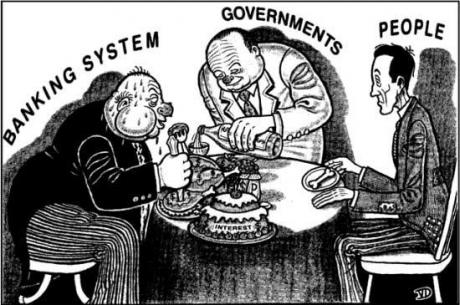 Economic globalization: “Swindlers of the world, unite!”
Economic globalization: “Swindlers of the world, unite!”  ISIS: the Vice Squad has arrived to Mosul!
ISIS: the Vice Squad has arrived to Mosul! 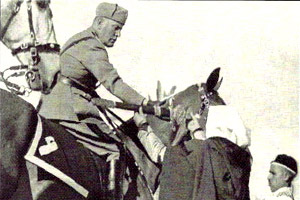 Fascism and Islam
Fascism and Islam 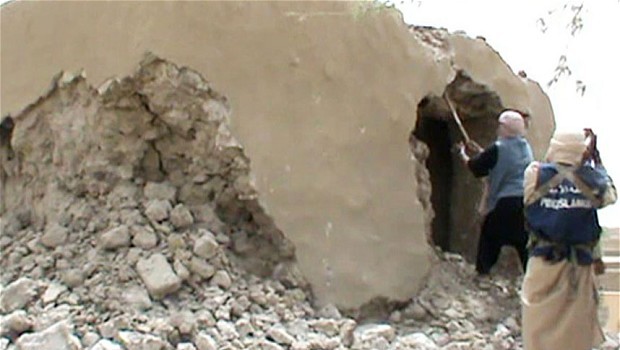 Who Manoeuvres the “Islamic Modernists”? A Focus on Libya
Who Manoeuvres the “Islamic Modernists”? A Focus on Libya 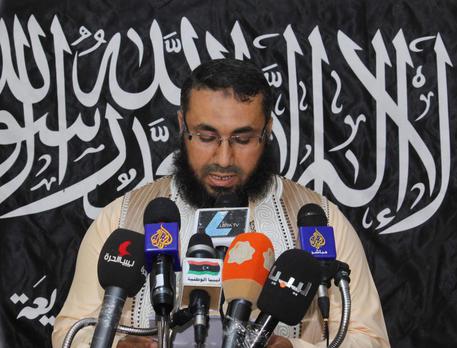 Is “free Libya” an appendage of ISIS?
Is “free Libya” an appendage of ISIS? 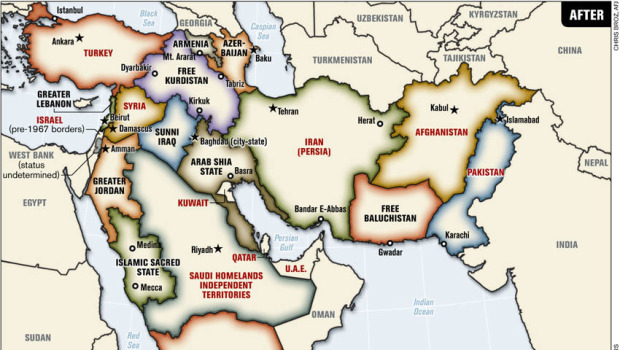 The “Great Middle East” and the anti-Islamic moment of the “clash of civilizations” (the Italian case)*
The “Great Middle East” and the anti-Islamic moment of the “clash of civilizations” (the Italian case)* 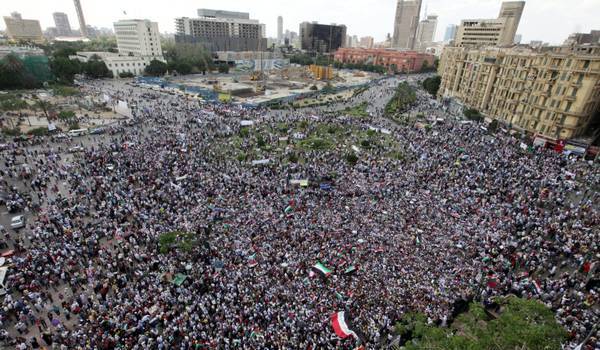 Guide to writing a dissertation on the “Arab Spring”
Guide to writing a dissertation on the “Arab Spring”  The “message” of Paris massacre: “Islam hates us”
The “message” of Paris massacre: “Islam hates us”